How do you spend your time at KMD?
What are your dreams for the future?
Five students speak their mind.
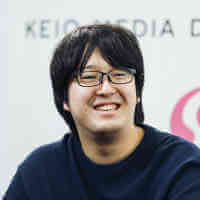
Daiya Kato
Japan
Third-year doctoral student
Real Project: Network Media
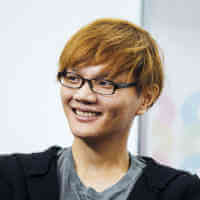
Hong-Yu Chang
Taiwan
Second-year master’s student
Real Project: OIKOS
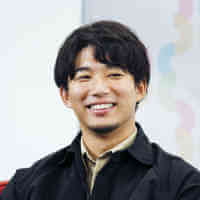
Junichi Nabeshima
Japan
Second-year master’s student
Real Project: Embodied Media
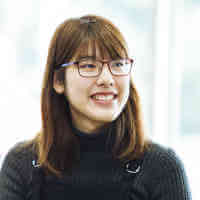
Rika Ikeda
Japan
Second-year master’s student
Real Project: Global Education
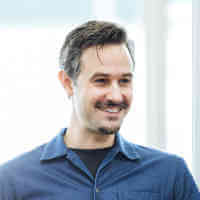
Charalampos (Harry) Krekoukiotis
Greece
Second-year master’s student
Real Project: Embodied Media
Why did you enroll at KMD?
Daiya: I chose KMD because I had wanted to research VR (virtual reality) and AR (augmented reality) at the time of admission. I have been at KMD for five years, originally doing my master’s here and now a Ph.D. Now I belong to the Network Media project, and I am currently doing research on the relationship between the media and the Internet.
Harry: Before coming to KMD, I studied architecture and film production in Greece and Germany, and worked professionally as a filmmaker. I was trying to find ways to combine my design background with media, so I decided to switch to media design. I wanted to do research in Japan and considered numerous universities, but I decided on KMD as it had a thriving international community and environment, and I felt I found what I was looking for in Embodied Media.
Junichi: While an undergrad, I studied business administration and statistics while being personally involved in activities to create new sports. Although I had a job lined up, I kept thinking that I wanted to immerse myself in making things, and it was then that an acquaintance introduced me to KMD.
Hong-Yu: I was working in Japan making toys and figurines. I was the opposite to Junichi and had always done jobs that involved making things, but I wanted to know more about the upper reaches of society and decided to go to a Japanese graduate school. I decided on KMD because the prospect of researching alongside people from different fields appealed to me.
Rika: While doing my bachelor’s, I did volunteer work supporting children who were, for one reason or another, unable to go to school or who had isolated themselves from others. I thought about what we could do to provide these children and young people with different educational experiences, and wanted to study the process of creating an enticing learning environment using the latest technology. My mentor while an undergraduate told me about KMD and as soon as I began looking into it, I knew that I wanted to study there.
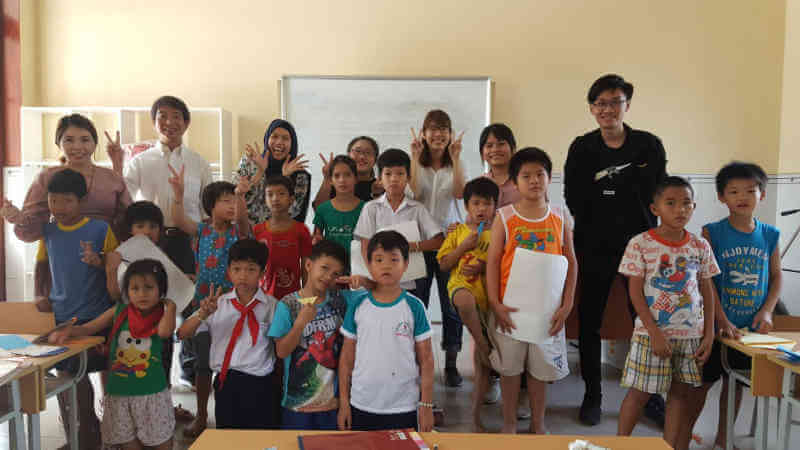
What is life usually like as a student?
Harry: I am researching kinetic interactive spaces, and I am now at the apex of the prototyping stage for my master’s thesis. I’m not just holed up in my research office though, and often go and see exhibitions for design and architecture as fieldwork for my degree. I’m also interested in traditional Japanese culture, and have joined groups for taiko (traditional Japanese drumming) and shamisen. It is hard to find enough time to sleep (laughs).
Junichi: I am doing research on making a robotic tail for humans. So, I am always at work in the Hacking Studio, the workshop of KMD. Besides that, outside the classroom, I help create new sports related to social welfare as well as playing handball for an adult recreational team.
Rika: Right now, I’m busy getting ready to put the educational program I have developed into practice at an orphanage in Vietnam as well as preparing for a conference presentation. Other than that, I’m always doing stuff with other members of my Real Project as well as having a part-time job keeping tabs on the equipment at the Media Studio of KMD.
Daiya: Because I am in the doctoral program, I receive a wage working as a researcher at KMD as well as teaching classes at other universities as an assistant or part-time lecturer. As far as I know, there are many people who have jobs or students who work like this in the doctoral program.
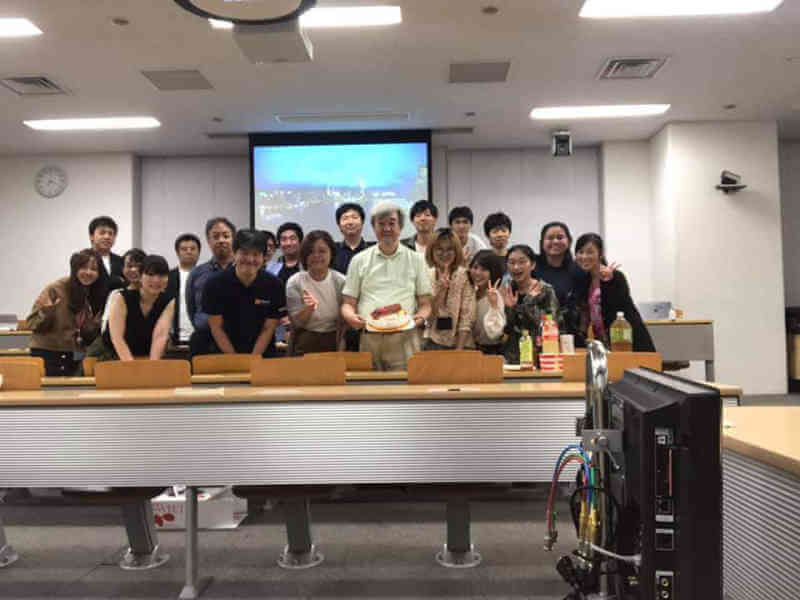
Are there any events or programs at KMD that have been particularly impressive?
Daiya: The annual KMD Forum where students present their research outcomes on the Real Projects is a fun event like nothing else. When I first participated, I was just overwhelmed at the opportunities we had to speak in English with the international students.
Rika: For me it is the “Joint Project Based Global Learning” program run by KMD and Stanford University. For two weeks in Japan and two weeks in the United States, myself and a group of students from KMD and Stanford created a new project while learning about real design thinking. It was really enjoyable.
Hong-Yu: As part of the student exchange program, “Global Innovation Design (GID),” I studied at the three locations of KMD in Yokohama, New York, and London. It was my first time to travel to Europe and the United States, and it was amazing to experience so many cultures firsthand.
Junichi: It wasn’t an event as such, but the first-year compulsory class “Innovation Pipeline” left a big impression on me. You learn about the four tracks of Design, Technology, Management, and Policy required at KMD, and at the end, you work in teams on the production of a prototype about which you also give a presentation. We had intense debates with students from completely different backgrounds, and I found it very thought-provoking.

Do you have any issues communicating with the foreign students?
Rika: When I enrolled, I had no English skills whatsoever. What’s more, I belonged to a project where only English was spoken. While I was struggling to communicate though, I found that the people around me would kindly offer their help, and I think thanks to that, I was able to improve my English ability somewhat.
Daiya: You can get by with the bare minimum of English vocab and body language. You will naturally pick up words, and if there is a problem, I recommend all going together for a drink.
Harry: For presentations and research, you collaborate in multilingual teams. Japanese is difficult, but I’m studying it every day and am communicating more and more with my Japanese friends and fellow students in Japanese. With international students I communicate in English, German, and sometimes a bit of Spanish. Still, I have come to realize that one can’t forge a deep understanding with someone else without a grasp of their cultural background, and I am always trying my hardest to achieve that. Understanding the culture and learning the language go together, I think.
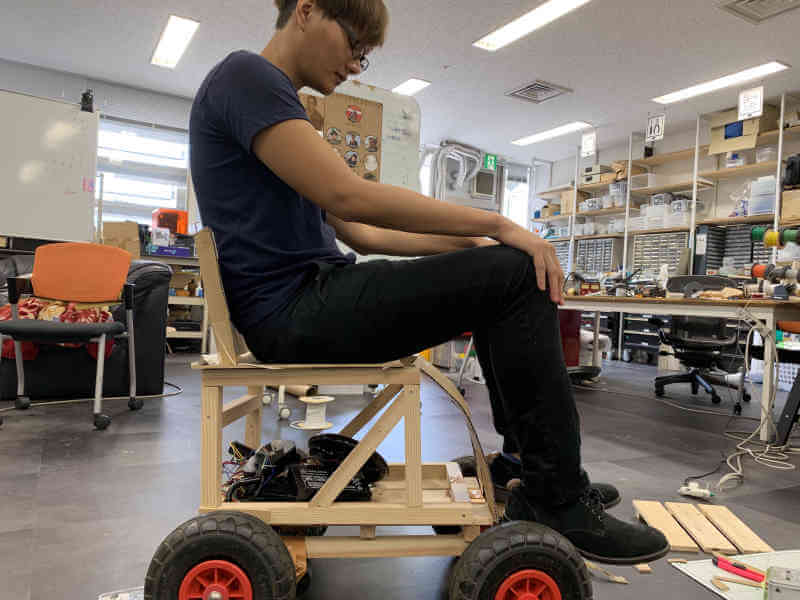
Could you give some advice to people thinking about applying to KMD?
Daiya: KMD is a school where you will immediately know whether or not you will get along with people, including faculty members. Before deciding to enroll, I think it is a good idea to carefully look into KMD, the faculty, and the content of the research.
Hong-Yu: It is important to have opportunities to hear from current students and to actually see the outcomes of the Real Projects at the KMD Forums, not just to rely on the website and information sessions.
Junichi: Because the two years go by so quickly after you enroll, you should have an image of what it is you want to do to ensure that you use your time at KMD meaningfully.
Rika: At KMD, there is meaning in using one of your strong points in collaboration with everyone else rather than trying to manage everything by yourself. People looking to enroll at KMD should focus on and polish their individual strengths.
Harry: After enrolling, you should try and get a good understanding of the environment and programs offered at KMD, and you should also make full use of all the studios and labs for your own projects. KMD gives you a lot of resources, make sure you make good use of them!
What are your dreams for the future?
Rika: I entered KMD with an interest in addressing truancy and educational inequality, and this feeling hasn’t changed. I want to support such children and young people here on out, and in the future I would like to setup an educational institution where people can learn how they want to.
Harry: I would like to work on interdisciplinary creative media projects that merge design with technology, specifically those that focus on making technology invisible; in other words, technology that cannot be physically seen, but is there, improving people’s lives. I am planning to continue working in research in Japan, as I am already enjoying being part of the vibrant research community here as well as the access to resources and opportunities it includes!
Junichi: When I enrolled, I never envisaged that, of all things, I would be making a robotic tail! It is really exciting being able to turn your ideas into a something tangible. While I will enter the workforce after graduating, I would like to continue to be involved in making things for my life’s work.
Daiya: One thing I thought after coming to KMD, is that although a great variety of people come together at the school, everyone really gets along. I like Japan, but Japanese organizations are very competitive. I would like to make Japan a little more receptive to learning about each other so that everyone can get along.
Hong-Yu: I have always done work making toys in Japan, but it is really an insular atmosphere. I don’t think that’s too different in other industries. Because I have had so many opportunities for collaborations and to learn at KMD, I would like to assist with bringing people together from various industries.

(This interview was held in November 2019)